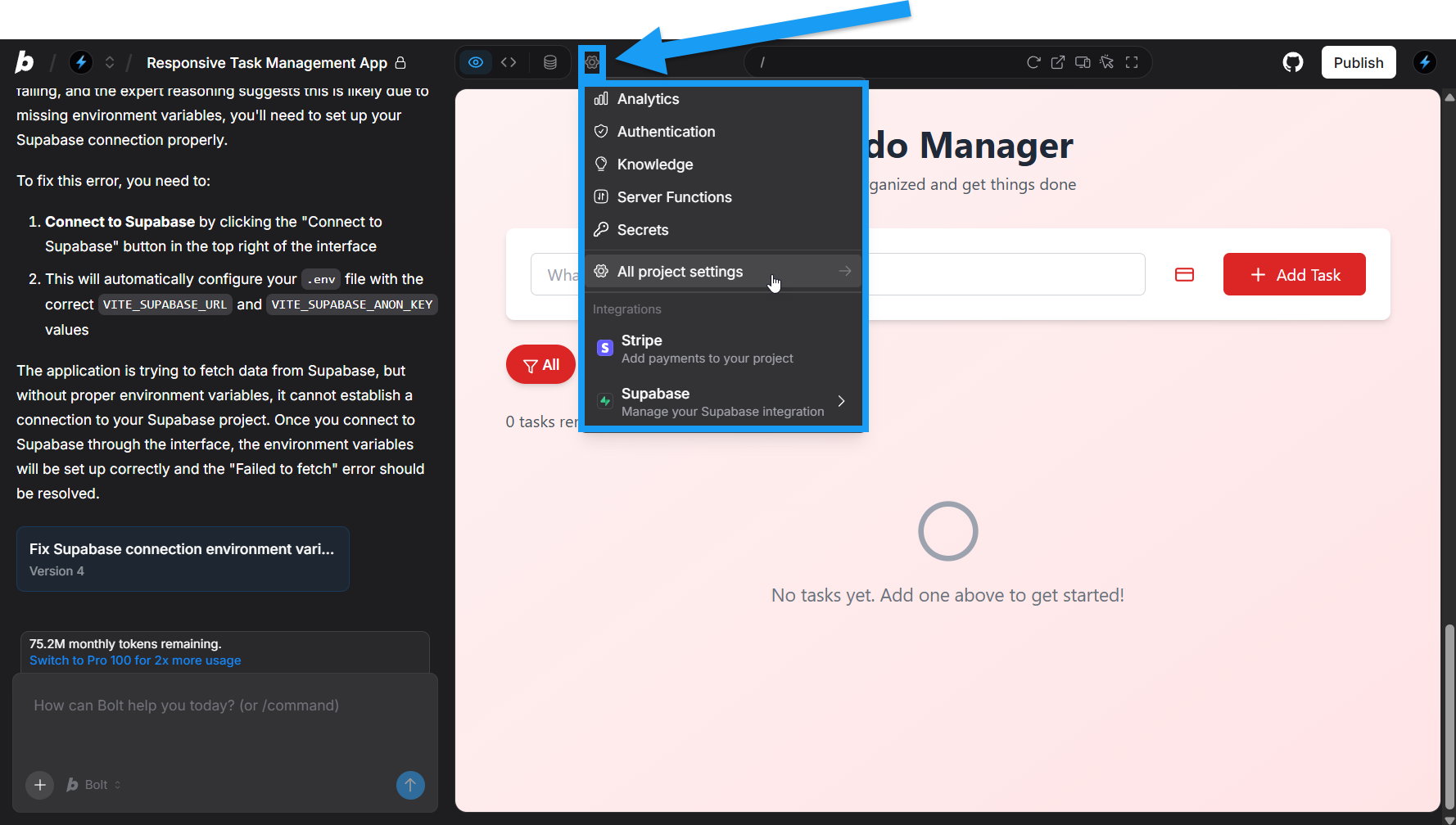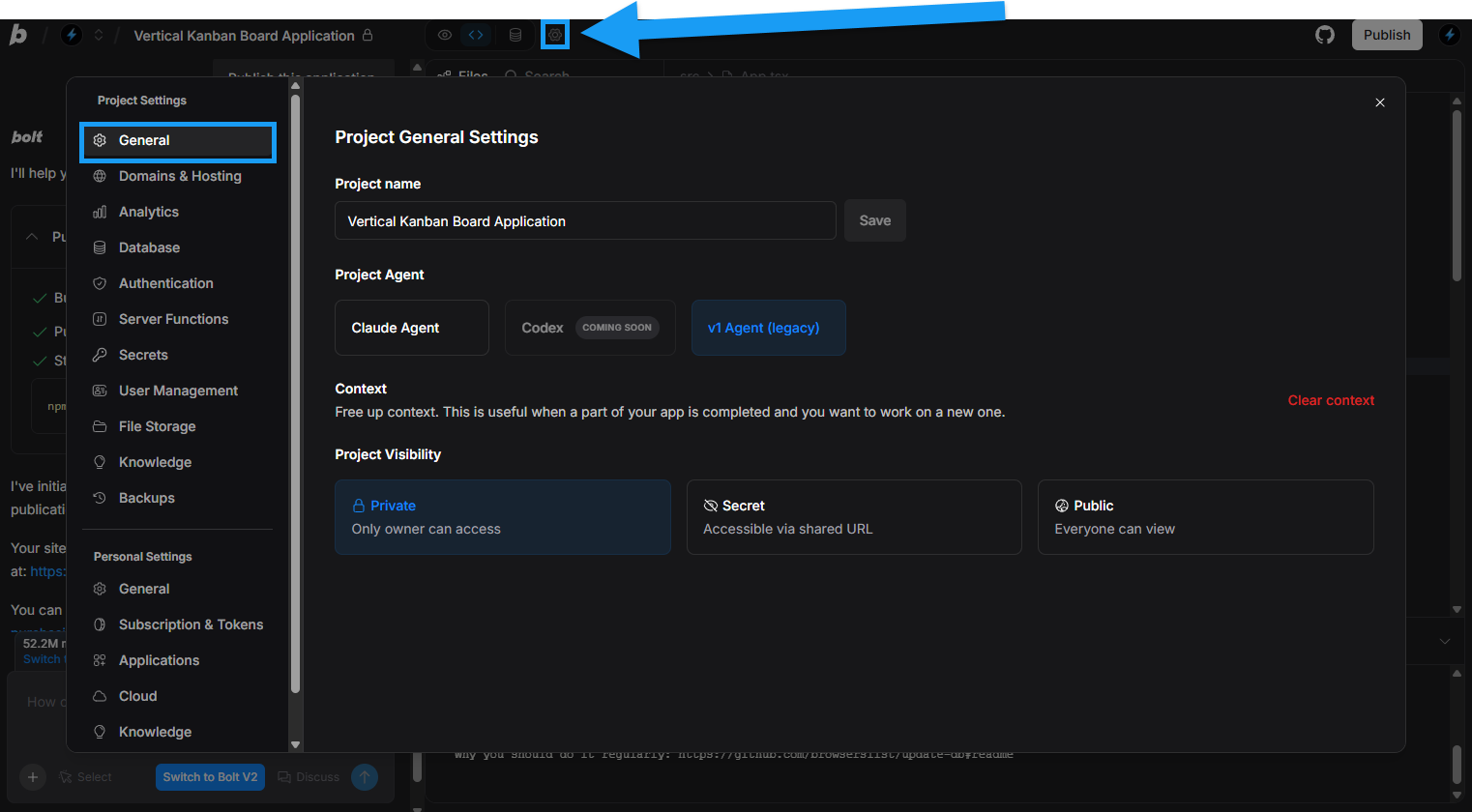Access project settings
You can access Project settings by clicking the gear icon in the top center of your screen, then clicking All project settings.
- Project General settings
- Domains and Hosting
- Analytics
- Project Knowledge
- Project Backups
General

Rename the project
- Type a new name in the text field.
- Click Save.
Project Agent
Switch between agents in Project Settings rather than the chatbox.Switching agents clears your project chat history.
Context
Clicking the Clear context red text will clear Bolt’s short-term memory of your project.Change the project visibility
Project visibility controls who can view your project’s URL inside the Bolt interface.Bolt projects are Private by default.
- Private – Only the project owner can view; they must be logged in to Bolt, and the project is hidden from everyone else.
- Secret – Anyone with the direct link can view; the project is not shown on the owner’s StackBlitz profile page (stackblitz.com/@[your-username]).
- Public – Anyone with the direct link can view; the project is shown on the owner’s StackBlitz profile page (stackblitz.com
Learn more about system and project knowledge in our article on Prompting Effectively.
Backups
You can restore your project to an automatically saved backup from the Backups page in Project Settings. Restore from a backup- Click the gear icon in the top center of your screen, then click All project settings.
- Click Backups.
- Find the backup with the date and time you want.
- Click Load next to that backup.
- In the confirmation window, click Create Fork.
This creates a new version of your project using the backup, without erasing the current version.